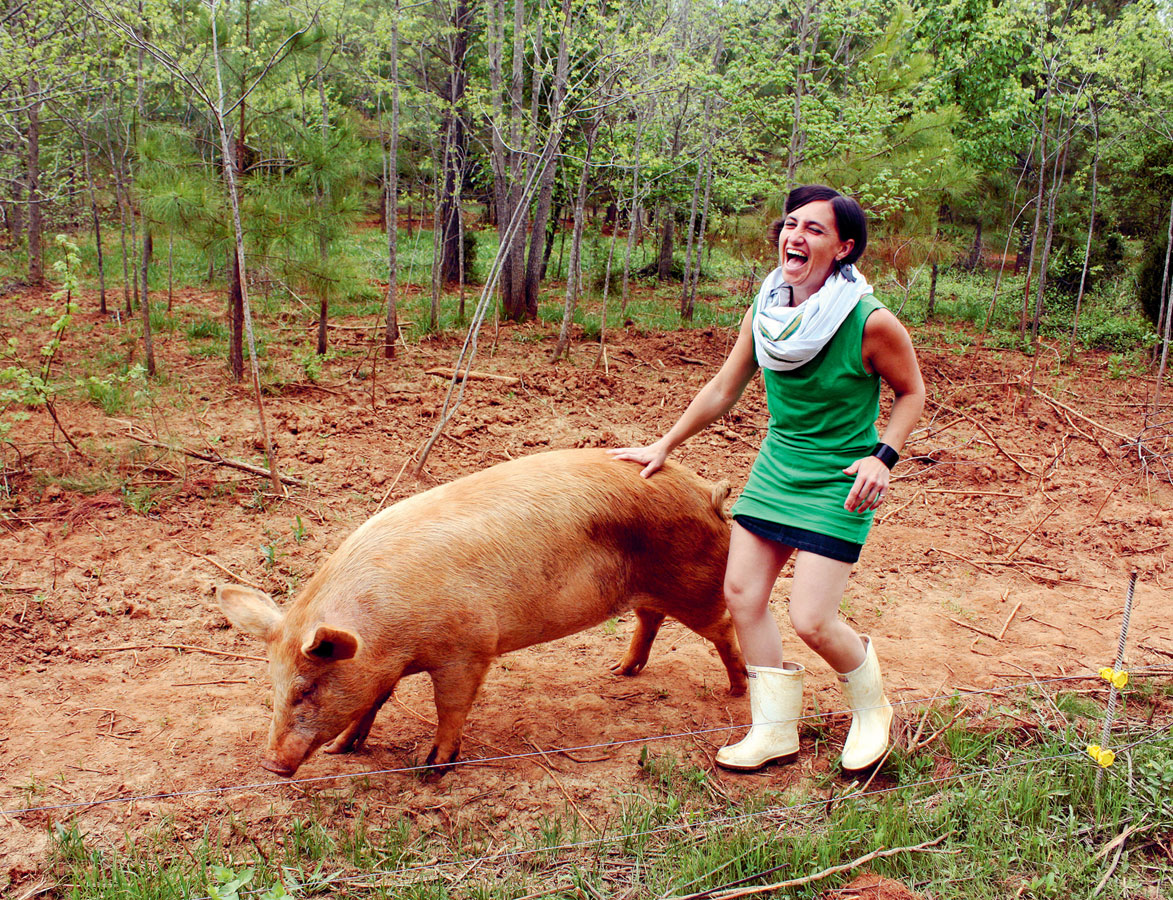Nose-to-Tail Eating
Putting the pig’s best foot forward
Making good food accessible to all is a tricky business and requires all kinds of great minds and hard work. Many of us are eager to celebrate the earthy, hands-on work of farmers, chefs, butchers and other craftspeople. There is, however, a whole group of people whose hard work often goes unnoticed in the good food world because their roles in this virtuous community are more nebulous. Olivia Tincani is one of these mysterious beings. She appears behind many corners and opens many doors.
I first met Olivia in Athens, Georgia, when I was researching my first book, Primal Cuts: Cooking With America’s Best Butchers. She feasted me at her restaurant, Farm 255 (which she co-owned with a mad group of talented collaborators), and toured me through their ranch and farm operation.
A Bay Arean by birth, Olivia has since returned to her native soil and the work of good food here in our area. A partner at Fare Resources, a local firm that supports responsible, food-focused businesses, she also serves as business, sales and communications strategist for Chico’s Rancho Llano Seco, a 150-year-old Mexican land grant property that raises heritage pork, heirloom beans and walnuts, all the while co-existing as a wildlife refuge, leaving much of the land stunningly uncultivated.
Suffice to say, Olivia knows a lot about pigs, from raising them in the red dirt of Georgia to convincing wary consumers to bravely “eat the insides” during Llano Seco’s annual Offal Wonderful campaign.
The recipe below for pig shanks, trotters included, comes from Matthew Palmerlee, who was Farm 255’s head chef at the time I visited.
We often think of braised and saucy shanks in the wintertime. This is the warm months’ treatment of a shank, still rich, but perfect served with grilled bread and fruit mostarda or onion jam or over an herbaceous green salad.
PIG TROTTERS
Yield: 4–5 main course servings
INGREDIENTS
2 whole pork shanks, at least 6 inches each, hoof on
2 carrots, diced into large pieces
1 white onion, diced into large pieces
3 stalks celery, diced into large pieces
A few bay leaves
A few juniper berries
A few cloves
2 shallots
1 tablespoon butter
2 tablespoons Dijon mustard
Salt and freshly ground pepper, to taste
1 teaspoon fresh thyme
1 tablespoon fresh parsley, chopped
Flour
2 whole eggs, beaten
Panko breadcrumbs
Extra-virgin olive oil, as needed for frying
TO PREPARE
Wash the shanks thoroughly then place them in a large pot of water and boil for 5 minutes. Discard the water.
Return the shanks to the pot and cover with cold water. Add the carrots, onion, celery, bay leaves, juniper berries and cloves and simmer for 3 hours. Strain the broth and reserve.
When cool enough to handle, remove the skin, meat, tendons and gelatin from the bones. Roughly chop meat, tendons and gelatin together. Add chopped skin in a ratio of 1 part skin to 2 parts meat mixture. Put in a bowl and add enough of the cooking liquid to just moisten the mixture.
Quick sauté the shallots in butter and add to meat mixture, along with mustard, salt and pepper to taste, thyme and parsley. Place the mixture in the center of a 2-foot-long piece of foil and tightly wrap, creating a roll.
Place the roll in the refrigerator for 24 hours to allow the gelatin to set.
The next day, cut the roll into 2-inch discs (with foil still on, then unwrap each individually). Dredge each piece with flour, then beaten egg, then coat with panko. Heat 1/2 inch of olive oil in a sauté pan and fry each medallion on both sides until golden brown.
Recipe reprinted from Primal Cuts: Cooking With America’s Best Butchers (Welcome Books, 2012)





